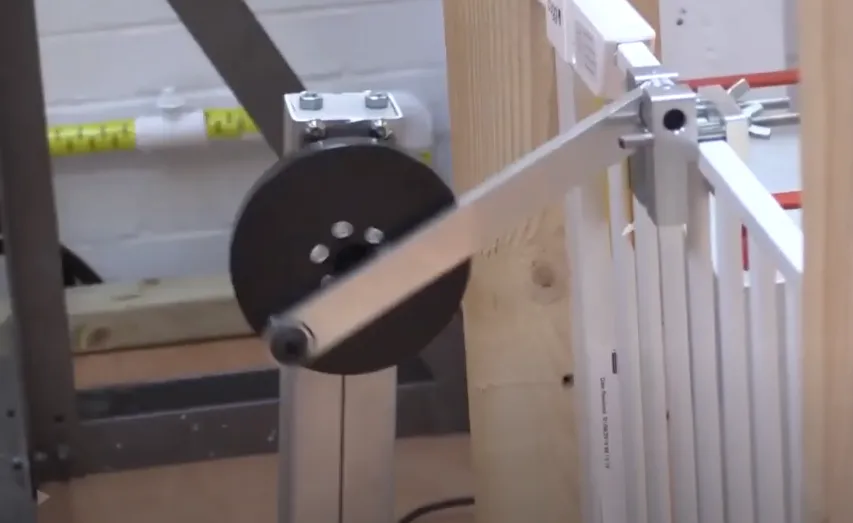ASTM F963 Safety of Children’s Furniture Components and Materials Testing
The ASTM F963-17a Standard Specification for Consumer Safety Performance of Toy Standards is a critical document that sets forth the safety requirements for children's furniture, including components and materials. This service ensures that furniture meant for use by children complies with these stringent standards to protect them from potential hazards.
The ASTM F963 standard aims to ensure that any furniture designed or intended primarily for use by children up to 14 years of age is safe from various hazards such as sharp edges, small parts, and other structural defects. This service focuses on the physical and chemical properties of materials used in these items, ensuring they meet not only the mechanical strength but also the toxicity standards.
The testing process involves multiple stages, including visual inspection, dimensional checks, durability tests, and material analysis. Each stage ensures that no aspect of the furniture compromises safety or quality. The visual inspection looks for any visible defects such as cracks, splinters, or loose parts. Dimensional checks ensure that the furniture dimensions meet the specified standards, preventing hazards from improper sizes.
Durability testing is crucial to assess how well the materials can withstand normal use and abuse. This includes cyclic loading tests on joints and mechanical components of the furniture. Material analysis helps identify any toxic substances or chemicals that could be harmful if ingested by children who may play with these items.
The ASTM F963 standard also covers specific aspects like burn resistance, flame retardancy, and flammability testing to ensure that even in case of accidental ignition, the furniture does not pose a significant fire risk. Additionally, it includes tests for small parts detachability which can prevent choking hazards. All these parameters are meticulously evaluated during our comprehensive testing process.
Our laboratory adheres strictly to ASTM F963 guidelines throughout this entire evaluation procedure ensuring accurate and reliable results every time. By choosing us for your compliance needs related to children’s furniture safety, you gain access to expert knowledge and state-of-the-art facilities dedicated solely to meeting these challenging requirements efficiently.
Applied Standards
| Standard Number | Title | Description |
|---|---|---|
| ASTM F963-17a | Consumer Safety Performance for Toy Standards | This standard specifies the safety performance requirements for toys and similar products intended primarily for use by children under 14 years old. |
| ISO 8124 series | Safety of Toys | A comprehensive international standard covering various aspects of toy safety including mechanical, physical, chemical, flammability, and electrical properties. |
| Test Types | Description |
|---|---|
| Burning Tests (ASTM F963-17a) | Determines the flammability of materials used in children’s furniture to prevent burn injuries. |
| Material Analysis & Toxicity Testing | Evaluates whether harmful substances are present within the materials used, ensuring no toxic elements can be ingested by kids. |
| Durability Tests | Assesses how robustly constructed each piece of furniture is against everyday wear and tear to maintain structural integrity over time. |
Why Choose This Test
- Comprehensive Compliance Assurance: Ensures that all aspects of safety are addressed as per ASTM F963 standards.
- Rigorous Testing Methods: Utilizes advanced laboratory techniques and state-of-the-art equipment to provide precise measurements.
- Prompt Reporting: Provides rapid turnaround times for detailed reports which can be crucial during product development cycles or regulatory submissions.
- Expertise & Experience: Our team comprises professionals who have extensive experience in interpreting ASTM F963 requirements and translating them into practical testing procedures.
By selecting our ASTM F963 safety certification service, you ensure that your products not only meet but exceed industry expectations regarding child safety. This can significantly enhance brand reputation while also reducing liability risks associated with non-compliance penalties or product recalls.
Environmental and Sustainability Contributions
The ASTM F963 standard incorporates principles of environmental responsibility by emphasizing the use of safer materials that do not contain hazardous chemicals. This reduces the impact on ecosystems throughout their lifecycle from manufacturing to disposal. Additionally, durable construction enhances longevity which minimizes waste generation through frequent replacements.
Our testing process also evaluates sustainable practices employed during production processes ensuring minimal resource consumption and efficient energy usage. These considerations contribute positively towards achieving sustainability goals set by manufacturers adhering to ASTM F963 requirements.





